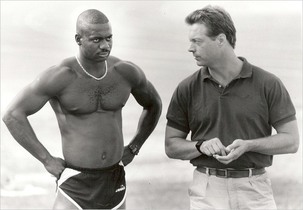 Everyone and their mother knows what hard work looks like (or what they think hard work is). It is the picture of that athlete sweating, breathing heavy, and training at an ungodly hour when the competition is at home sleeping. Working hard is the relentless pursuit towards accomplishing your goals. Resting hard (if that is even a term) is not so simple to define. In our culture, it may be viewed as being lazy. Or not as committed. Or being "outworked" by the competition. But in reality, it is a problem here in America: Our athletes are over-trained and under-recovered. Legendary Track & Field coach Charlie Francis kept recovery in mind during each training session. Every athlete has a cup that they can fill during training. The cup has limited space. The more you fill that cup with weight training and elongated practice training sessions, the less room you have in that cup for other important qualities that will improve sport performance. There is a delicate balance here. You want to make improvements in the weight room while not effecting your on the field performance. An easy day on the practice field might mean a heavy day in the weight room and vice versa. Francis created a model that helped him understand the effect each training session will have on the body, and how much of "the cup" was filled for that given day. If his athletes performed a session that included a lot of explosive work (olympic lifts, sprints, etc.), he knew that his athletes used up about 90% of their cup. On those, learning new sport skills would be a bad idea. If the athlete performed lower body lifts, he knew that anywhere between 40-70% of the cup was filled. The variance in the percentages are dependent upon the loads that are lifted. For upper body work, anywhere between 25-40% was used up and for isolation work (think biceps curls and leg extensions), 25% and lower was used. The greater the percentage used up, the more recovery time needed. Also, on those days of 70% and above, it is not wise to learn new skills or use new training modalities. Those will require room in the cup and will detract from their energy to develop more important qualities. Keep in mind, the goal is to become better at their given sport. If you need room in the cup for practice, don't use it all up in the weight room. This is part one of a small collection of articles that will be posted on the effects of training and how to properly recover. In the next post, we will be looking at one of the most overlooked aspects of training: proper recovery! Chris Fluck Join my newsletter to gain access to upcoming promotions and events! Click Here to Join!
Powered By
Swing Apps
0 Comments
Leave a Reply. |
|